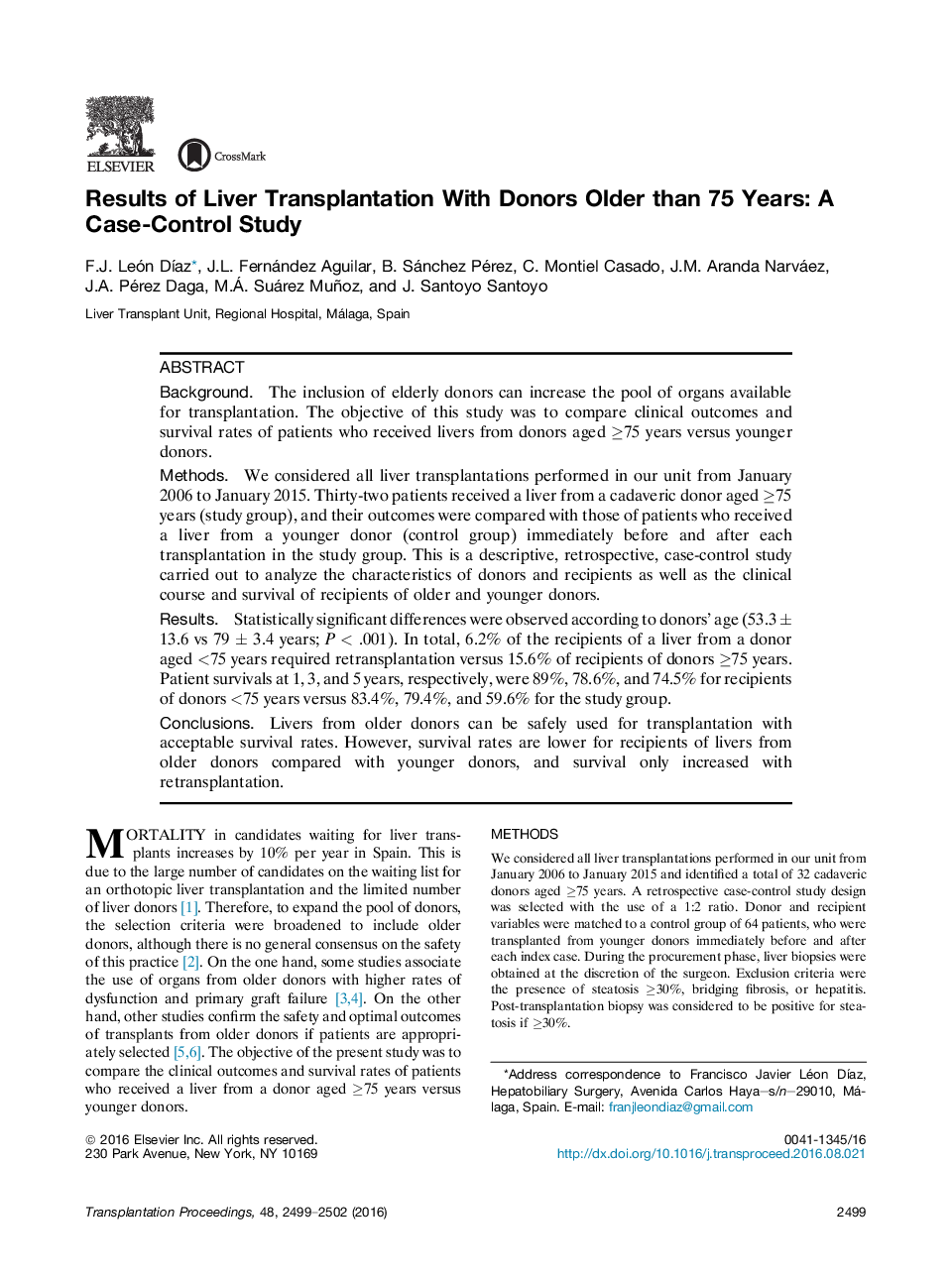| Article ID | Journal | Published Year | Pages | File Type |
|---|---|---|---|---|
| 5729403 | Transplantation Proceedings | 2016 | 4 Pages |
BackgroundThe inclusion of elderly donors can increase the pool of organs available for transplantation. The objective of this study was to compare clinical outcomes and survival rates of patients who received livers from donors aged â¥75 years versus younger donors.MethodsWe considered all liver transplantations performed in our unit from January 2006 to January 2015. Thirty-two patients received a liver from a cadaveric donor aged â¥75 years (study group), and their outcomes were compared with those of patients who received a liver from a younger donor (control group) immediately before and after each transplantation in the study group. This is a descriptive, retrospective, case-control study carried out to analyze the characteristics of donors and recipients as well as the clinical course and survival of recipients of older and younger donors.ResultsStatistically significant differences were observed according to donors' age (53.3 ± 13.6 vs 79 ± 3.4 years; P < .001). In total, 6.2% of the recipients of a liver from a donor aged <75 years required retransplantation versus 15.6% of recipients of donors â¥75 years. Patient survivals at 1, 3, and 5 years, respectively, were 89%, 78.6%, and 74.5% for recipients of donors <75 years versus 83.4%, 79.4%, and 59.6% for the study group.ConclusionsLivers from older donors can be safely used for transplantation with acceptable survival rates. However, survival rates are lower for recipients of livers from older donors compared with younger donors, and survival only increased with retransplantation.
